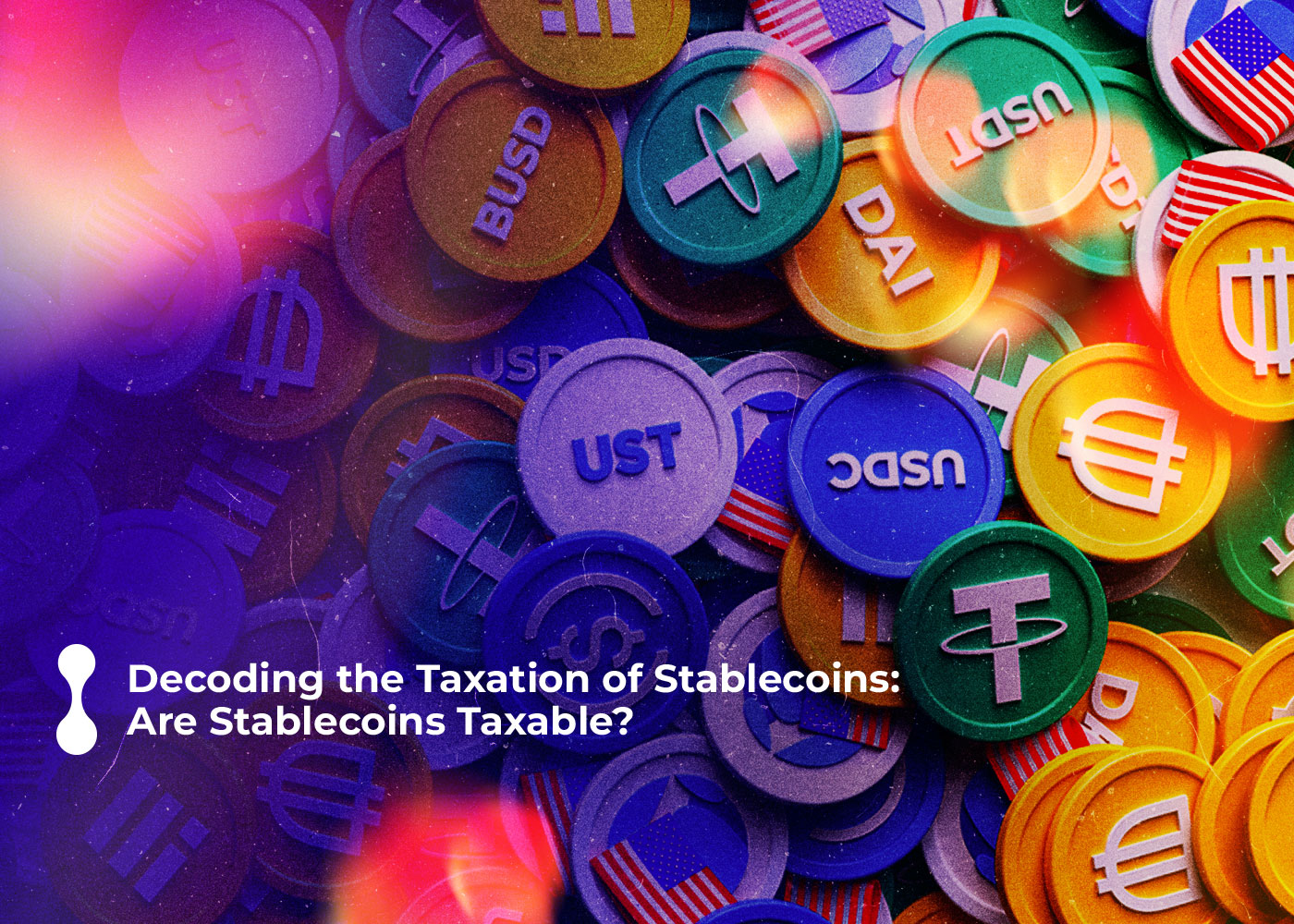As cryptocurrencies have gained broad appeal among investors and financial institutions, a new type of digital asset has emerged: stablecoins. Stablecoins are designed to offer customers the advantage of cryptocurrency’s decentralization while providing a specific price point backed by popular assets like US dollars or gold. But if you’re investing in stablecoins, it pays to consider the tax implications first. This blog post will provide an in-depth explanation of how taxation works for these unique assets.

What Are Stablecoins?
Stablecoins are cryptocurrencies intended to have a stable value and are usually pegged to fiat currencies such as US dollars or euros. Unlike other cryptocurrencies, such as Bitcoin and Ethereum, which fluctuate significantly over time, stablecoins are designed to maintain a constant weight, resulting in a more reliable value. Medium for the preservation and exchange of This stability is achieved through various methods such as collateralization, algorithmic mechanisms, or a combination of both. Stablecoins have gained popularity in recent years to reduce volatility in the cryptocurrency market and bridge the gap between traditional finance and the world of blockchain technology.
Different Types of Stablecoins
Stablecoins work differently depending on the underlying asset. To make matters even more confusing, in some cases, there is no reserve at all.
To illustrate, we will look at the four most common types of stablecoins:
- Stablecoin backed by fiat currency
- Bullion-backed stablecoins
- Encrypted stablecoin
- Algorithmic stablecoin
- Stablecoin backed by fiat currency:
Fiat-backed stablecoins are the most common type of stablecoin, and he is among the most popular. Examples of popular fiat-backed stablecoins are Tether (USDT) and USD Coin (USDC).
These coins work like promissory notes. Buy a stablecoin using $1 (or other fiat currency). You can later exchange one stablecoin for $1. The price of a fiat-backed stablecoin will not fluctuate much due to the collateral being held.
- Stablecoin backed by fiat currency:
Fiat-backed stablecoins are the most common type of stablecoin and one of the most popular. Examples of popular fiat-backed stablecoins are Tether (USDT) and USD Coin (USDC).
These coins work like promissory notes. Buy a stablecoin using $1 (or other fiat currency). You can later exchange one stablecoin for $1. The price of a fiat-backed stablecoin will not fluctuate much due to the collateral being held.
- Bullion-backed stablecoins:
Precious metal-backed stablecoins use reserve assets such as gold, silver, and other precious metals to stabilize their value. The downside of these coins is that they are centralized, which many cryptocurrency investors avoid. Examples of precious metal-backed stablecoins are PAX Gold and Digix. Gold has long been viewed as a good investment by traditional investors. These stablecoins allow cryptocurrency investors to access markets without using traditional centralized trading markets.
- Encrypted stablecoin:
Cryptocurrency-backed stablecoins use other cryptocurrencies as backup assets. This may sound strange at first due to the volatility of cryptocurrencies.
However, most popular crypto-backed stablecoins are over-collateralized to stabilize their value. In other words, if you have a $1 stablecoin backed by a cryptocurrency, the underlying cryptocurrency supporting it is worth $2. This means that if the underlying asset falls in value, the price of the stablecoin is less likely to fluctuate due to the built-in cushion. Examples of crypto-backed stablecoins are Dai (DAI) and Wrapped Bitcoin (WBTC).
- Algorithmic stablecoin:
Algorithmic stablecoins are the ones we referenced earlier that, confusingly, are not backed by reserve assets at all. They are also sometimes referred to as uncollateralized stablecoins. Instead, algorithmic stablecoins use computer algorithms to control price fluctuations. For example, your algorithm’s stablecoin price is fixed at $1. As the price rises, the algorithm increases the supply of coins to lower the cost. If the price decreases, the algorithm cuts the store to increase the price again. Examples of algorithmic stablecoins are AMPL or TerraUSD.
Are Stablecoins Taxable?
Are stablecoins taxable? The short answer is yes; stablecoins are taxed like any other cryptocurrency. Although often pegged to fiat currencies like the U.S. dollar, they are still considered assets by the majority of tax authorities around the world. Eligible.
Like income, when you “earn” a stablecoin, you pay income tax on the stablecoin. It depends on where you live, but generally, you pay income tax when:
- You get your salary in stablecoins,
- Mine stablecoins
- Get Stablecoins with Airdrops
- Earn interest with stablecoins
We pay capital gains tax on stablecoins whenever:
- We sell stablecoins with fiat currency.
- We exchange your stablecoin for another cryptocurrency.
- We use stablecoins for your goods and services.
- We gift stablecoins to friends and family (in most countries).
Is the conversion of BTC to USDT taxable? The answer is overwhelmingly yes. This depends on where you live, but you must pay capital gains tax when you convert cryptocurrencies to stablecoins and vice versa.
We only pay capital gains tax on our profits from these transactions. Of course, due to the permanence of stablecoins, we are unlikely to pay capital gains tax on these transactions as they are not making a profit.
To Sum Up:
Stablecoins, like most forms of cryptocurrency, offer reliable protection from inflation, making them a great store of value for investors and users. They also provide advantages in terms of speed, security, and low transaction costs. The taxation policies for stablecoins differ from country to country, and staying current on the regulations in the countries where you invest or spend your money is essential. That said, the underlying principles of taxation remain consistent: any profits made from trading valuable assets must ultimately be reported and taxed under local law. As long as you understand how different governments and jurisdictions view stablecoin gains, you can reduce taxes owed when it comes time to pay up.
